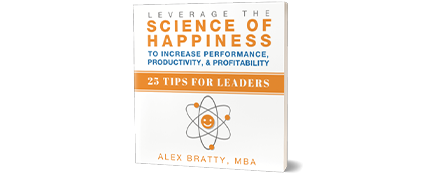If your team isn’t performing as well as you like, it might be because people don’t feel confident in speaking up, sharing ideas, or maybe even in the work they’re doing. But of course, people rarely want to admit this, so these reservations often fly below the radar and get missed. This is a real problem, and it’s costing you and your team as talent and productivity are lost to feelings of uncertainty and doubt.
There are few ways to address this, and we’ll dive into one of them in this post—which is all about cultivating positive identities.
Huh? What the heck are positive identities?
Well, the fact is we all have an identity, which is the way we think about ourselves. We can use labels, descriptions, images, and stories to define our identity. For example, I’m a dog mom who likes nothing better than to stay home with my family on a Saturday night and snuggle with my dogs. That’s part of my identity. I’m also a wife, a business owner, a recovering perfectionist, a yogi…I could go on and on, but you get my point.
However, sometimes, the stories we tell ourselves can get in the way of us having a positive identity. Let’s say I tell myself that I’m just no good at networking events, and I find it hard to connect with people in this situation. Guess what? That’s the identity I’m creating for myself—that I’m awkward at these events, and I just don’t like going to them, and that becomes my reality.
You can relate, right?
What we tell ourselves becomes our story, which, in turn, becomes our identity.
Okay, so we’re clear on what we’re talking about when it comes to identity, but what about cultivating a positive identity? Why does that matter so much, and how can it increase a person’s confidence?
Well, Dr. Laura Morgan Roberts is an expert in this field, and her research shows that when people have positive identities, they are more likely to:
- Experience positive emotions, which leads to more productivity and greater performance.
- Persevere when faced with challenges.
- Be creative in generating ideas and finding solutions to problems.
- Cope with threats to their identity at work, such as when they’re demeaned or criticized.
- Have more diverse and high-quality relationships at work, which in turn can lead to more opportunities.
Essentially, it seems that when people have a positive identity for themselves, they feel more confident and capable of accomplishing the task at hand.
So, with all those benefits, it’s worth thinking about how you can cultivate a positive identity for yourself as a leader and encourage your team members to cultivate their positive identities.
Good news: there’s a simple way to do this. It’s by using what’s called the GIVE model that Morgan Roberts developed with fellow researchers, Jane Dutton and Jeff Bednar.
The GIVE model of positive identity helps you answer the questions, Who am I? and What’s my identity at work?
G: I am GROWING—are you evolving and adapting as a leader? Are your team members growing? When we feel like we’re growing personally and professionally, we’re more likely to feel good, be more invested in our work, and perform better.
I: I am INTEGRATED—are you fusing different parts of your life together? For so long, conventional wisdom said we had to leave our personal lives at the door when we came to work. But we know now that doesn’t work very well. We are whole beings, with multiple facets that all contribute to our identity, so think about ways that you can integrate who you are personally with who you are professionally. For example, I have a friend who finally realized that she couldn’t and didn’t want to separate her love for animals and the volunteer work she does with a local rescue with her business that’s focused on speaking and writing. Now, she blends the two. Guess what? She’s happier, and her business has grown so much more since she owned her FULL positive identity.
V: I am VIRTUOUS—are you demonstrating virtuous characteristics such as courage, wisdom, integrity, humility, and compassion? We know from oodles of leadership research that when a leader genuinely embodies these virtuous qualities, their teams are more committed to the organization, and they’re more likely to emulate these qualities. It’s like an upward spiral of virtuous culture.
E: I am ESTEEMED—are you feeling worthy of positive regard from others and embracing your defining qualities? How can you own them and feel good about them? One way is to ask your colleagues what they believe your best qualities or strengths are and then to look for the common themes that emerge. Sometimes, we don’t even recognize our own strengths. First, we need to become aware of them so we can own them and start to feel esteemed.
Essentially, this model provides us with a framework we can use to cultivate a positive identity, both for ourselves as leaders, and for the people we lead. And, it can serve as a mindful prompt for the need to always be nurturing who we are and how we want to lead as positive leaders.
So, why not GIVE it a go? 😉
Write out the acronym and the key words—GIVE: Growing, Integrated, Virtuous, and Esteemed—and pin them up somewhere that you’ll see them every morning when you go into work or sit down at your desk. That way, you get a little reminder to do something each day to cultivate your positive identity.
By the way, if you want to take a deeper dive on this particular topic, Dr. Morgan Roberts has a whole chapter devoted to it in the excellent book, How to be a Positive Leader: Insights from Leading Thinkers on Positive Organizations.
Got questions or just wanna share how you’re cultivating positive identities in your organization? Write to me at [email protected]. I always love to hear from you!
Plus, if you want some simple practices that can increase positivity in your workplace, download my book for free: 25 Tips for Leaders: How to Leverage the Science of Happiness to Increase Performance, Productivity, and Profitability, and tune into my weekly podcast, The Positive Leadership Movement.






0 Comments